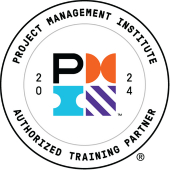Disciplined Agile Senior SCRUM Master (DASSM)® – 2 Days, 14 PDUs
Course Description
Do you want to take Disciplined Agile to a new level? Are you looking for tools to solve complex problems and enhance your organization’s agility? Do you want to learn how to lead your team to excellence?
Expand your knowledge and build practical skills around Disciplined Agile, business agility, leadership, and team development.
Disciplined Agile Senior Scrum Master is a nine-lesson, instructor-led course that shows you how to use the Disciplined Agile tool kit to solve a variety advanced problems, work with allies within your organization, and optimize how teams work. You will gain knowledge in planning, reporting, and metrics, and coordinating activities, as well as how to meet challenges in these areas. And you’ll develop the skills you need to foster emotional intelligence, resolve conflicts, and lead high-performance teams at any stage of development.
Filled with activities, supplemental reading, and more, this course will prepare you to take the Disciplined Agile Senior Scrum Master (DASSM) exam and, equally important, start using Disciplined Agile immediately within your leadership role.
Learning Objectives
Describe the roles and responsibilities of DASSM
Describe the Tuckman Team Development Model (Tuckman, 1965).
List and define the three issues that affect team performance.
Define the four stages of team development and describe how each relates to the issues of content, process, and feelings.
Summarize Tuckman’s observations about team development.
List factors that impact the time a team takes to evolve.
Explain how the Tuckman model can be adapted to the realities of the modern world.
Practice a team development activity for the forming stage.
State the behaviors present in the forming stage.
Describe what teams need during the forming stage.
List tasks for the leader to develop teams in the forming stage.
Practice a team development activity for the storming stage.
State the behaviors present in the storming stage.
Describe what teams need during the storming stage.
List tasks for the leader to develop teams in the storming stage.
Practice a team development activity for the norming stage.
State the behaviors present in the norming stage.
Describe what teams need during the norming stage.
List tasks for the leader to develop teams in the norming stage.
Practice a team development activity for the performing stage.
State the behaviors present in the performing stage.
Describe what teams need during the performing stage.
List tasks for the leader to develop teams in the performing stage.
Solve problems by identifying teams at various stages of development.
Use knowledge of issues related to the stage to identify issues to address with the team.
Develop plans to deal with team issues by selecting appropriate activities and leader tasks based on the team’s stage.
Identify and describe various methods of Team decision making
Consensus based decision making
Balancing learning about new information with moving quickly
Techniques: Roman voting, Fist of Five, Highsmith’s Decision Spectrum
Define emotional intelligence and explain why it is essential to team performance.
Describe the emotional intelligence model and its components.
Explain how to achieve each component of resilience and outlook.
Assess what practices you can adopt to build outlook and resilience.
Explain how to achieve each component of emotional intelligence “with self.”
Assess what practices you can adopt to enhance your “with self” dimension of emotional intelligence.
Explain how to achieve each component of emotional intelligence “with others.”
Assess what practices you can adopt to enhance your “with others” dimension of emotional intelligence.
Describe why one should create psychological safety and embrace diversity
Explain why business agility is important to an organization’s viability.
Describe how other business areas such as finance, legal, marketing, sales, and procurement can contribute to an organization’s overall business agility.
Use the spider chart to identify and analyze tactical scaling factors in more complex situations.
Explain how to scale for agility.
Define “tactical agility at scale” and “strategic agility at scale”
List the five process goals most affected by tactical scaling
Connect the dots between the dimensions in the spider chart and the top-5 tactical scaling process goals.
Describe the scope and purpose of the Disciplined DevOps layer.
Define scope of layer
Define the process blades in the Disciplined DevOps layer.
Use the DA tool kit to optimize how the team works with the Disciplined DevOps layer:
Explain how to optimize delivery
Describe how to move to a continuous delivery model (and life cycle)
Describe security concerns (DevSecOps)
Describe data management concerns (Database DevOps)
Describeenterprise release management, support, and operations concerns
Use the DA tool kit to identify and help resolve challenges that teams face in the Disciplined DevOps layer.
Identify relevant goal diagrams to consider.
Identify relevant decision points within the selected process goal.
Select options that can most likely solve the challenge, based on the team’s context.
Identify organizational allies that can help resolve the delivery teams’ challenges in the Disciplined DevOps layer
Explain how to optimize delivery with the “test-first” method as it relates to the quality of requirements
Describe the “test-first” method as it relates to continuous delivery
Describe what the criteria for “done” might look like
Describe the scope and purpose of the value stream layer.
Define scope of layer
Define the process blades in the value stream layer
Identify process blades shared with the Disciplined Agile Enterprise (DAE) layer and explain why they are shared.
Use the DA tool kit to optimize how teams work with the value stream layer
Need to talk about MBIs, intake process, design thinking, user experience, …
Tying the portfolio, program and product level to what delivery teams work on
Use the DA tool kit to identify and help resolve challenges that the delivery teams face in the value stream layer.
Identify relevant goal diagrams to consider.
Identify relevant decision points within the selected process goal.
Select options that can most likely solve the challenge, based on the team’s context.
Identify organizational allies that can help resolve the delivery teams’ challenges in the value stream layer
Explain the purpose of the Coordinate Activities process goal and why it is important.
List the decision points of the Coordinate Activities process goal.
Outline the most important questions that arise when seeking to coordinate activities.
Describe the options for sharing information, facilitating working sessions, coordinating release schedules, and coordinating across locations.
Contrast the options for dealing with artifact ownership.
Discuss possible strategies for coordinating a team of teams.
Explain how to improve the value creation structure of teams
Use the DA tool kit to optimize the flow of work and solve challenges related to coordinating and collaborating across teams, or within a larger team of teams.
List examples of when conflict can be healthy within an individual and within a group.
Describe the five levels of conflict.
Explain how constructive disagreement (level 1) is helpful for evaluating decisions
Explain how fear of conflict causes additional forms of dysfunction within a team.
Describe how to de-escalate conflict at each of the five levels.
Explain the Thomas-Kilmann Conflict Resolution Model and its components relative to concern for self and concern for others.
Define and give examples of each quadrant of the Thomas-Kilmann Conflict Resolution Model.
Demonstrate how to use healthy and unhealthy language to solve a conflict. Identify the DA role responsible for planning.
Describe the concept of sufficient planning.
List and describe the factors used to determine when planning is sufficient.
Compare the waste and risk levels of four types of planning strategies.
List and define the five levels of scope and who focuses on each.
Demonstrate how to solve a planning problem using the Release Planning goal diagram.
Identify relevant decision points.
Choose the appropriate strategy, based on the team’s context.
Explain how to implement just-in-time planning using a Gantt chart.
Identify how your team can improve planning using two goal diagrams: Release Planning and Produce a
Potentially Consumable Product (Plan Your Work decision point).
Explain how to accurately forecast release dates and costs
Explain the difference between an MVP and an MBI
Using MBIs to plan
Explain how to handle dependencies between teams
Explain how teams approach metrics.
List metrics principles.
Describe effective measurement strategies for teams.
List universal metrics and describe how and when to collect and use them.
Explain issues related to measuring quality.
Explain how organizations approach metrics.
Describe conditions under which system-wide metrics should be used.
Describe “rolling up” metrics several levels.
Explain what types of measurement work and what do not work.
Explain what to consider, including value, when measuring what matters.
Explain why status reports are ill suited to lean and agile ways of working.
Explain how to choose and design specific metrics to measure improvements against areas related to team performance that need improvement (GQM, OKRs)
Demonstrate how to solve a measurement problem using the Govern Delivery Team goal.
• Identify the relevant decision point.
• Choose the appropriate strategy, based on the team’s context.


